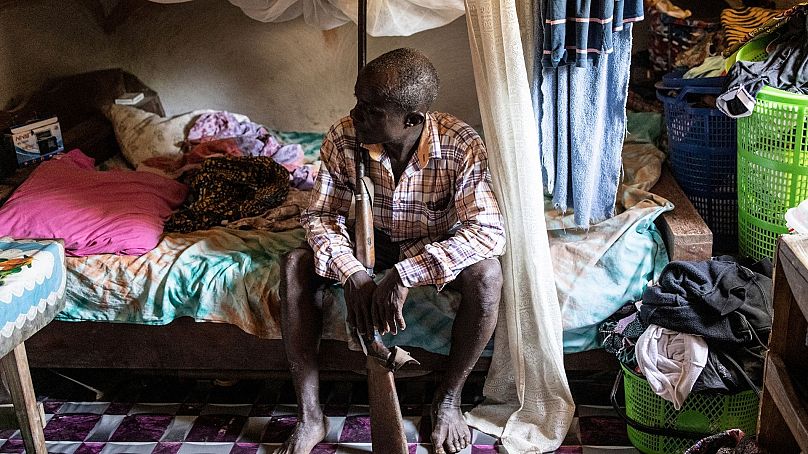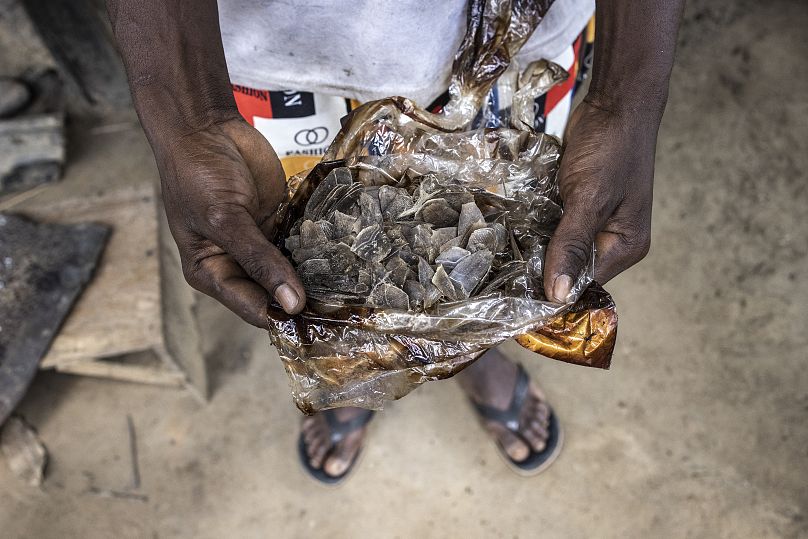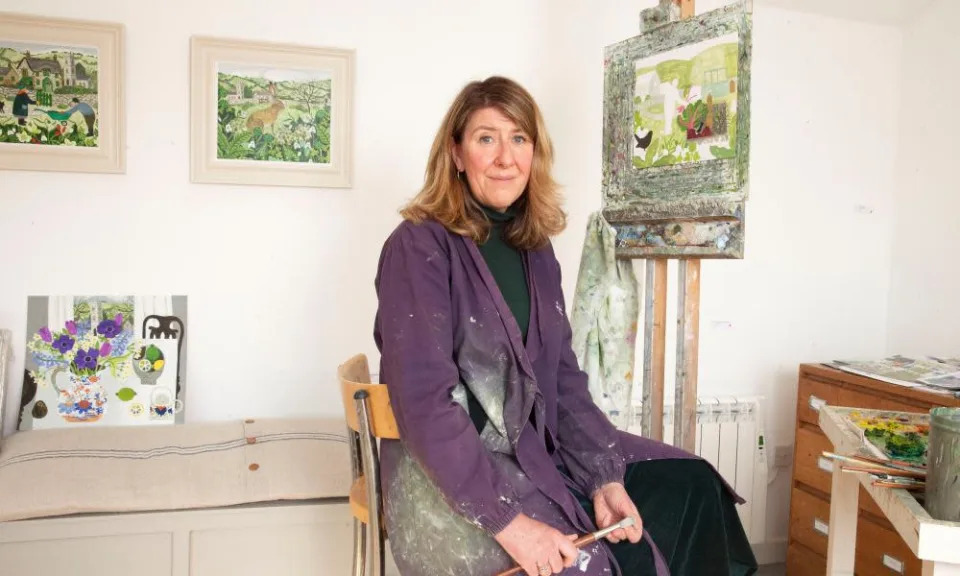Rising temperatures put women and girls in danger.
Pregnancy drives risk even higher.
Morgan McFall-Johnsen
Sat, 5 March 2022

Rising temperatures put women and girls in danger. Pregnancy drives risk even higher.

Women collect water from a stream outside the village of Tsemera in Ethiopia's northern Amhara region, February 13, 2016. Katy Migiro/Reuters
Women and girls face unique risks as the climate crisis deepens, according to a new UN report.
Water scarcity can lead to increased violence against women and girls, who are often responsible for fetching water.
Pregnancy adds further risk. Extreme heat is associated with more preterm births and stillbirths.
Roughly half of people on the planet are at heightened risk from climate change, a grim report published this week by the United Nations revealed. Women and girls, along with pregnant people and the fetuses they carry, face greater health and safety issues from rising temperatures than men.
"All women are at increased risk," Rupa Basu, chief of air and climate epidemiology at the California Environmental Protection Agency's Office of Environmental Health Hazard Assessment, who was not involved in the report, told Insider.
Women and girls are both more likely than men to die in extreme weather events, more at risk of domestic and sexual violence in the aftermath, and more likely to suffer food insecurity, according to the report. When pregnant, such catastrophes can lead to serious complications.

Liz Foster, who is 38 weeks pregnant, talks to her son at a fountain at Yards Park in Washington, on June 21, 2012.Jacquelyn Martin/AP Photo
"Women are more exposed, and this is because we see that climate change exacerbates existing inequalities so much," Marlene Achoki, who co-leads global policy on climate justice for the humanitarian organization CARE, told Insider.
Men often have control over critical resources like food and water, while women tend to have less credit and mobility to help them adapt to new extremes, according to the report.
The UN's Intergovernmental Panel on Climate Change (IPCC) recruited hundreds of scientists to summarize years of research for its sixth climate assessment. The first working group shared its findings last year, focusing on the physical changes to our planet. Monday's publication, from the second working group, examines how those changes will affect ecosystems and human lives.
The report projects that extreme weather — floods, droughts, and heat waves — will become more frequent and more severe in the coming decades, driving food and water shortages across the globe. To protect women, girls, and pregnant people, governments must start preparing for these disasters, and their health outcomes, now.
"I'm happy to see that pregnant women and women and girls are included in this report," Basu said, adding, "For so long, they were kind of just missed as being a high-risk population."
Women trek miles in extreme heat and face violence to fetch water

Women carry water jerrycans on their heads in Kilifi county, Kenya, on February 16, 2022.Baz Ratner/Reuters
In places where drinking water doesn't come from a tap, women and girls trek out of town to collect water, according to the IPCC report. During droughts, they often have to walk to more distant water sites, putting them at risk of heat stroke, as well as gender-based violence.
Aditi Mukherji, who led the water chapter of the new IPCC report, said where she lives in India, women have to walk long distances for water. Achoki said she's seen the same thing in Kenya.
"When I travel to the northern part of our country, that is at the edge of the border, it is so hot. Just one step when I land down to the airstrip and I feel like going back to the plane," Achoki told Insider.
In this heat, she said, women and girls sometimes walk as far as 20 kilometers (12.5 miles) to fetch water. When they reach it, long lines often await them. In the process, they face an increased risk of injuries, encounters with dangerous animals, and sexual abuse, such as demand for sexual favors in exchange for water, according to the IPCC report.

A woman collects grain at a camp for internally displaced people in Adadle district in the Somali region, Ethiopia, on January 22, 2022.Claire Nevill/World Food Programme/Reuters
Increased access to water, like local community taps, wells, and better water-storage facilities could help protect women and girls as droughts grow more prolonged and severe. The challenge is getting governments and organizations to pay for those fixes.
"It's not as if the solutions are new or anything. It's often about lack of finance," Mukerheji told Insider.
Risks rise during pregnancy: 'You feel a little helpless in a way'

Summer Weeks, 23, who is pregnant, shades her eyes from the sun in a remote area of the Bodaway Chapter in the Navajo Nation outside of Gap, Arizona, on September 14, 2020.Stephanie Keith/Reuters
Basu usually runs cold — she'll find herself shivering on warm, sunny days in Oakland, California. But that changed when she got pregnant. Suddenly she would heat up and break out in a sweat, while everyone around her seemed perfectly comfortable.
"I just couldn't regulate my body temperature," she said.
She had studied how heat affects high-risk populations, like older people, but she didn't expect to be one of them anytime soon.
"I was kind of feeling like, 'Oh, I get it now. I can feel it,'" she said. "You feel a little helpless in a way."
Basu's experience made her wonder if pregnant people, too, were uniquely vulnerable to extreme heat.

A pregnant woman wears a mask during the beginning of the COVID-19 pandemic.Charles Krupa/AP Photo
Soon she led an analysis of nearly 60,000 births across 16 California counties, comparing birth outcomes with weekly averages of apparent temperature (which accounts for humidity) from the parents' residential zip codes. She found that an increase of 10 degrees Fahrenheit was associated with 8.6% more preterm births. The study was published in the American Journal of Epidemiology in 2010.
Since then, further studies have found similar relationships between temperature increases or heat waves and a rise in preterm births or stillbirths.
"Only in the last decade do we have any data at all to support the association between heat and adverse birth outcomes," Basu said.
Several studies cited in the IPCC report suggest that extreme heat, airborne particulates like those carried in wildfire smoke, and water-related illnesses are linked to higher rates of miscarriage, stillbirth, low birth weight, and preterm birth.

A pregnant mother receives the COVID-19 vaccine at a maternity clinic in Colombo, Sri Lanka, on Aug. 24, 2021.(Photo by Ajith Perera/Xinhua via Getty Images)
Still, heat advisories often leave pregnant people out of their recommendations for vulnerable populations. Similar to older or immunocompromised people, Basu said, pregnant people may need to take extra precautions — keeping cool and inactive on hot days, or staying indoors with an air filter when wildfire smoke adds moderate levels of particulate matter to the air.
"I keep coming back to the same point, to not just look at the general population and see what's happening, but then to look at the really high-risk, most vulnerable populations and also consider them," Basu said, adding, "I think that's often missed, and then we're not really getting the whole picture."




















